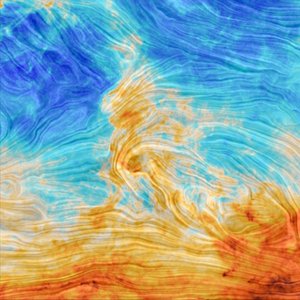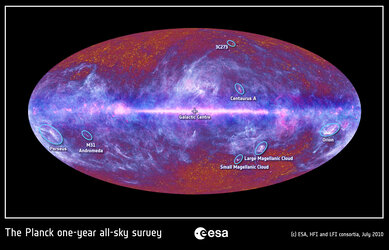Accept all cookies Accept only essential cookies See our Cookie Notice

About ESA
The European Space Agency (ESA) is Europe’s gateway to space. Its mission is to shape the development of Europe’s space capability and ensure that investment in space continues to deliver benefits to the citizens of Europe and the world.
Highlights
ESA - United space in Europe
This is ESA ESA facts Member States & Cooperating States Funding Director General Top management For Member State Delegations European vision European Space Policy ESA & EU Space Councils Responsibility & Sustainability Annual Report Calendar of meetings Corporate newsEstablishments & sites
ESA Headquarters ESA ESTEC ESA ESOC ESA ESRIN ESA EAC ESA ESAC Europe's Spaceport ESA ESEC ESA ECSAT Brussels Office Washington OfficeWorking with ESA
Business with ESA ESA Commercialisation Gateway Law at ESA Careers Cyber resilience at ESA IT at ESA Newsroom Partnerships Merchandising Licence Education Open Space Innovation Platform Integrity and Reporting Administrative Tribunal Health and SafetyMore about ESA
History ESA Historical Archives Exhibitions Publications Art & Culture ESA Merchandise Kids Diversity ESA Brand Centre ESA ChampionsLatest
Space in Member States
Find out more about space activities in our 23 Member States, and understand how ESA works together with their national agencies, institutions and organisations.
Science & Exploration
Exploring our Solar System and unlocking the secrets of the Universe
Go to topicAstronauts
Missions
Juice Euclid Webb Solar Orbiter BepiColombo Gaia ExoMars Cheops Exoplanet missions More missionsActivities
International Space Station Orion service module Gateway Concordia Caves & Pangaea BenefitsLatest
Space Safety
Protecting life and infrastructure on Earth and in orbit
Go to topicAsteroids
Asteroids and Planetary Defence Asteroid danger explained Flyeye telescope: asteroid detection Hera mission: asteroid deflection Near-Earth Object Coordination CentreSpace junk
About space debris Space debris by the numbers Space Environment Report In space refuelling, refurbishing and removingSafety from space
Clean Space ecodesign Zero Debris Technologies Space for Earth Supporting Sustainable DevelopmentLatest
Applications
Using space to benefit citizens and meet future challenges on Earth
Go to topicObserving the Earth
Observing the Earth Future EO Copernicus Meteorology Space for our climate Satellite missionsCommercialisation
ESA Commercialisation Gateway Open Space Innovation Platform Business Incubation ESA Space SolutionsLatest
Enabling & Support
Making space accessible and developing the technologies for the future
Go to topicBuilding missions
Space Engineering and Technology Test centre Laboratories Concurrent Design Facility Preparing for the future Shaping the Future Discovery and Preparation Advanced Concepts TeamSpace transportation
Space Transportation Ariane Vega Space Rider Future space transportation Boost! Europe's Spaceport Launches from Europe's Spaceport from 2012
Our galaxy’s heart
Thank you for liking
You have already liked this page, you can only like it once!
At first glance, this image may resemble red ink filtering through water or a crackling stream of electricity, but it is actually a unique view of our cosmic home. It reveals the central plane of the Milky Way as seen by ESA’s Planck satellite and the Atacama Pathfinder Experiment (APEX), which is located at an altitude of around 5100m in the Chilean Andes and operated by the European Southern Observatory.
This image was released in 2016 as the final product of an APEX survey mapping the galactic plane visible from the southern hemisphere at submillimetre wavelengths (between infrared and radio on the electromagnetic spectrum). It complements previous data from ESA’s Planck and Herschel space observatories.
Planck and APEX are an ideal pairing. APEX is best at viewing small patches of sky in great detail while Planck data is ideal for studying areas of sky at the largest scales. It covers the entire sky – no mean feat. The two work together well, and offer a unique perspective on the sky.
This image reveals numerous objects within our galaxy. The bright pockets scattered along the Milky Way’s plane in this view are compact sources of submillimetre radiation: very cold, clumpy, dusty regions that may shed light on myriad topics all the way from how individual stars form to how the entire Universe is structured.
From right to left, notable sources include NGC 6334 (the rightmost bright patch), NGC 6357 (just to the left of NGC 6334), the galactic core itself (the central, most extended, and brightest patch in this image), M8 (the bright lane branching from the plane to the bottom left), and M20 (visible to the upper left of M8). A labelled view can be seen here.
Planck was launched on 14 May 2009 and concluded its mission in October 2013. The telescope returned a wealth of information about the cosmos; its main aim was to study the Cosmic Microwave Background (CMB), the relic radiation from the Big Bang. Among other milestones, Planck produced an all-sky map of the CMB at incredible sensitivity and precision, and took the ‘magnetic fingerprint’ of the Milky Way by exploring the behaviour of certain light emitted by dust within our galaxy.
Its observations are helping scientists to explore and understand how the Universe formed, its composition and contents, and how it has evolved from its birth to present day.
APEX is a collaboration between the Max Planck Institute for Radio Astronomy, the Onsala Space Observatory, and the European Southern Observatory, ESO. The telescope is operated by ESO.
-
CREDIT
ESO/ATLASGAL consortium; ESA/Planck -
LICENCE
ESA Standard Licence

The magnetic field along the Galactic plane

Planck’s flame-filled view of the Polaris Flare

A mysterious ring of microwaves

X-raying a galaxy’s stellar remnants















 Germany
Germany
 Austria
Austria
 Belgium
Belgium
 Denmark
Denmark
 Spain
Spain
 Estonia
Estonia
 Finland
Finland
 France
France
 Greece
Greece
 Hungary
Hungary
 Ireland
Ireland
 Italy
Italy
 Luxembourg
Luxembourg
 Norway
Norway
 The Netherlands
The Netherlands
 Poland
Poland
 Portugal
Portugal
 Czechia
Czechia
 Romania
Romania
 United Kingdom
United Kingdom
 Slovenia
Slovenia
 Sweden
Sweden
 Switzerland
Switzerland
























